Enter our photo competition HERE Get involved

Nature Notes: Discover Natterjack Toads and Morecambe Bay's dune habitats
A springtime view from the far-west of Morecambe Bay - find out why Morecambe Bay's dune habitat is so important for rare Natterjack Toads. Guest blogger, Darren Mason, from the National Trust looks at this rare species and delicate habitat.
As you walk along the coastline of the north-west of England, the landscape is dominated in places, by ridges of sand blown in on westerly winds and captured at the foot of the beach by large stands of Marram Grass. These ridges travel several hundred metres inland from the coast and are called ‘sand dune’ systems and are often synonymous with childhood memories of rolling down the sand hills and picnics on the beach. Sadly, we have largely taken this habitat for granted, whether used as places to divert bombing runs during the second world war, waste dumps for industry, golf courses and coastal strip holiday destinations. Because after-all “it is only sand”.
However, this delicate habitat is critical as a natural flood defence system for our nearest towns and cities, and their associated infrastructure and are also home to some of the rarest species of plant and animal in the United Kingdom.
One such species is the rare Natterjack Toad. Who would think the dry, salty, and sandy nature of this habitat would be suitable for amphibians, which we expect to see in our garden ponds and warm, moist compost heaps? Incredibly, here in the north-west of England from the Merseyside coast in the south to the Solway coast in the north, our sand dune systems play host to one of the UK’s rarest amphibian species.
Related to its more widespread cousin the Common Toad, the Natterjack Toad is thought to be found in only 60 sites across the UK, primarily in the coastal sand dunes of the north-west, but also at several lowland heath sites scattered across Surrey, Hampshire, and East Anglia, and along the Dingle coast of south-west Ireland. One of the most important sites in the UK for this species is Sandscale Haws National Nature Reserve in Cumbria. This large sand dune system within the Morecambe Bay & Duddon Estuary Special Protection Area, holds between 18-25% of the UK’s population of Natterjack Toad, and over 50% of the Cumbrian population.
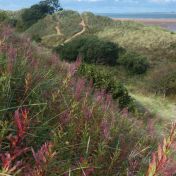
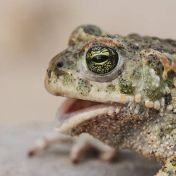
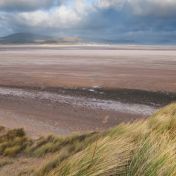
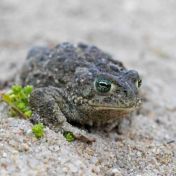
The Natterjack Toad can be distinguished from its cousin, by its bold, yellow-green vertebral stripe along its back, and its bright green iris’s, compared to the orange iris of Common Toad. They have an affinity with the burrow they use to rest out of the sun and away from predators during the day, returning to the same one each year. Unlike Common Toad which return to the same breeding pond each year, Natterjack Toads prefer to use temporary, shallow pools that are found in the lowest points between the dune ridges, areas known as dune slacks. The shallow, sandy nature of these pools means that the water heats up rapidly, speeding up the process of metamorphosis from egg to toadlet. A process if the temperature is right, that will only take 4 weeks.
Their use of temporary pools, and their ability to travel of distances up to 5km, means that when a pool is found they need a successful way to advertise to any potential mate in the area. Unlike any of our other resident amphibian species, they use their vocal sacs to create a loud rasping call, which can be heard up to a mile away and on warm spring evenings, often after a period of rain between April and up to July.
Once a female is interested, the male clambers onto her back and remains there in “amplexus”. The female then slowly swims out to warmer water and releases her eggs, whilst continuing to slowly swim around. As the eggs pass over the males’ feet it stimulates him to release his sperm and fertilise the eggs. You may be lucky enough to see these long, drawn-out spawn strings, often forming a single row of typically 3000 eggs in the un-vegetated pools of our local sand dune systems. This is the opposite of their cousin, the Common Toad who lays half the number and likes to wrap their double row of eggs, tightly around vegetation and in much deeper, cooler ponds.
To hear the call of the Natterjack Toad listen to the Morecambe Bay Podcast detailed below and for more information on Sandscale Haws National Nature reserve, please head to the National Trust website.
Darren Mason, Area Ranger, National Trust, Sandscale Haws National Nature Reserve

Discover Natterjack toads with the National Trust and Morecambe Bay Podcast
Hear the call of the Natterjack Toad on the Morecambe Bay Podcast latest edition recorded at Sandscale Haws in April 2024.
Discover Natterjack Toads and dune habitats here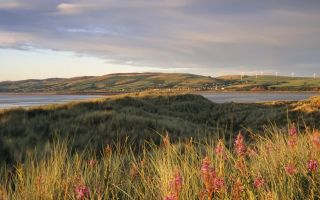
Discover Sandscale Haws National Nature reserve
For more information on the reserve, how to visit and what you can see, head to the National Trust website.
Explore Sandscale Haws National Nature reserve here